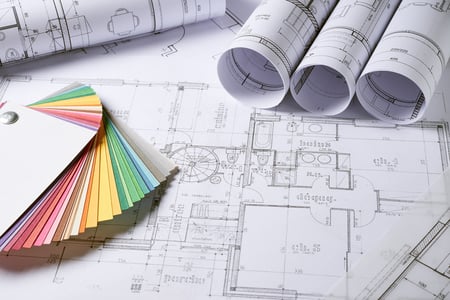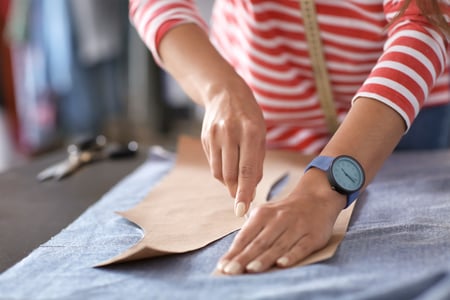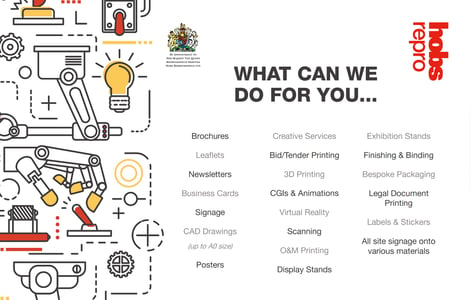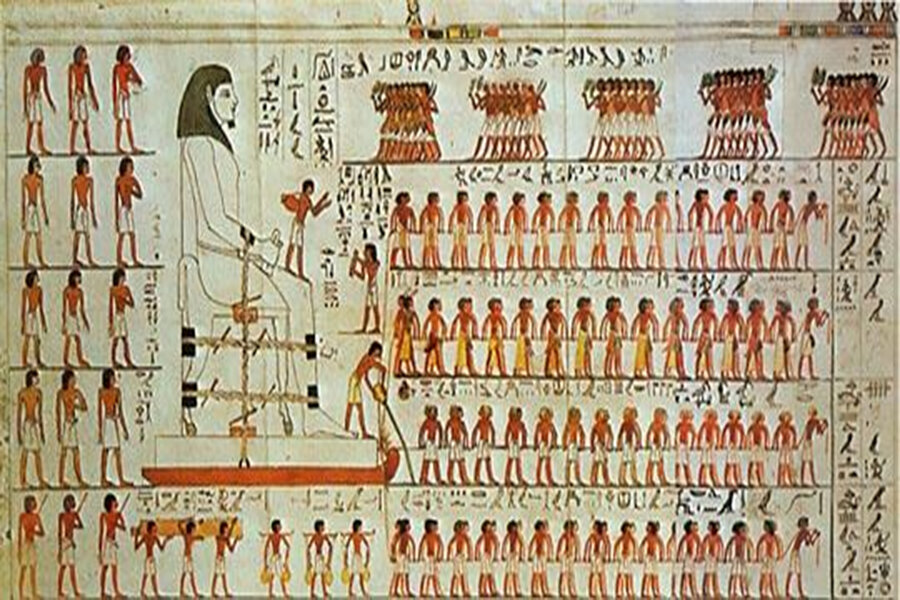A brief history of architectural drawings | Plan Printing 24
28 March 2023
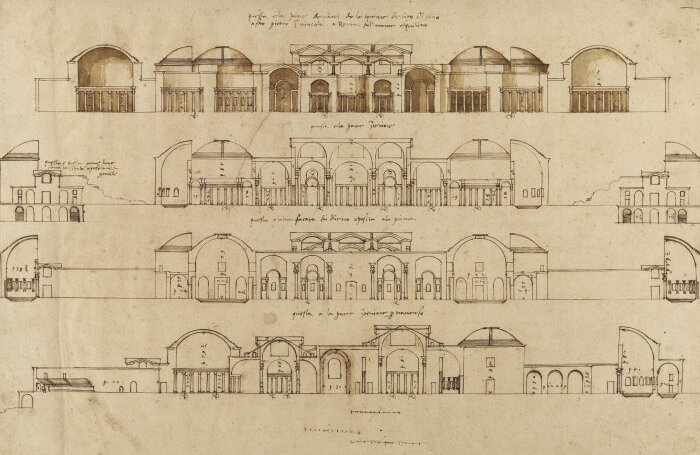
Architectural drawings, also known as construction plans, are visual representations of building designs that help architects and construction workers to execute their projects. These drawings provide a detailed overview of every aspect of the building, including dimensions, materials, and orientations. The history of architectural drawings dates back to ancient times, where they were primarily drawn by hand. However, with the emergence of technology, architects and construction professionals have had to adapt to newer methods of drawing, like digital design and printing.
So, what is the history of architectural drawings?
The ancient Egyptians were one of the first civilizations to record their architectural designs. The drawings were primarily done on papyrus using a reed pen and ink. These architectural plans provided construction instructions for massive structures like pyramids and temples, and they were then used by builders to create the structures. The drawings included everything from floor plans to elevations and even the materials used in construction. The Egyptian civilization was so advanced that they even built their own libraries to store architectural drawings and documents.
Ah-Ahram weekly, 5-11 August 2004, Issue 702/ The University of Amsterdam.
The ancient Greeks also created architectural drawings with detailed designs for buildings like the Parthenon. Greek architects used wax tablets to create sketches, and these sketches were then transferred onto parchment paper. A major development in the history of architectural drawings was made by the Roman architect Vitruvius. He compiled a comprehensive architectural guidebook called "De Architectura," which contained detailed instructions regarding the designs and materials used in buildings.
During the Middle Ages, architectural drawings became even more advanced. Gothic architecture, with its elaborate and intricate designs, required precise drawings to bring the vision to life. Architects like Villard de Honnecourt and Guido da Vigevano created detailed sketches of cathedrals and other Gothic structures. These sketches were often done on parchment paper and were designed to be portable, so that architects could take them to different locations.
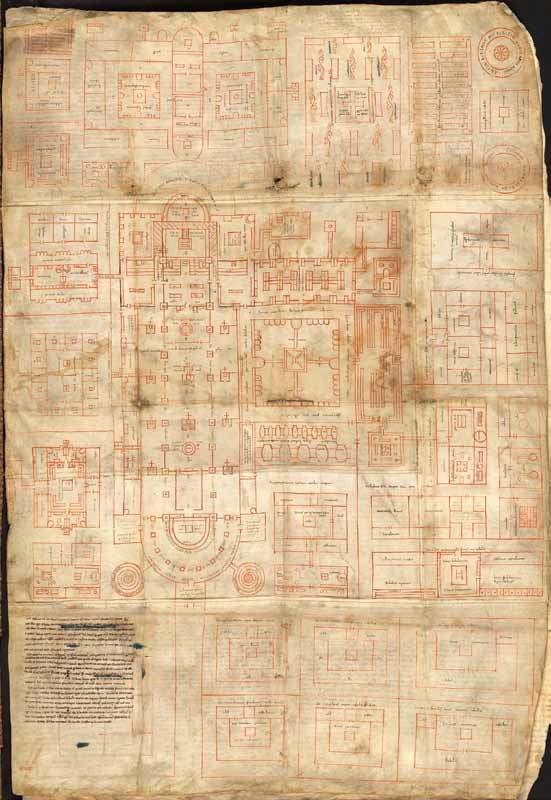
An original medieval architectural drawing for the Abbey of St Gall in Switzerland c. 830 CE. Stored in the monastery library, the plan was never realised but it shows the proposed structure of the herb gardens. (Image: Reichenau-St. Gall Virtual Library – http://www.stgallplan.org/en/index_plan.html)
The Renaissance period saw a surge in the use of architectural prints. The Italian architect Andrea Palladio created detailed architectural drawings that were then printed and distributed widely. He combined his knowledge of classical architecture with the latest technology of the time, resulting in designs that still inspire modern architects today. These drawings were created using ink on paper and were transferred to multiple copies using a printing press. This technology made it possible for architects to share their designs with others and for builders to use the designs to create structures.
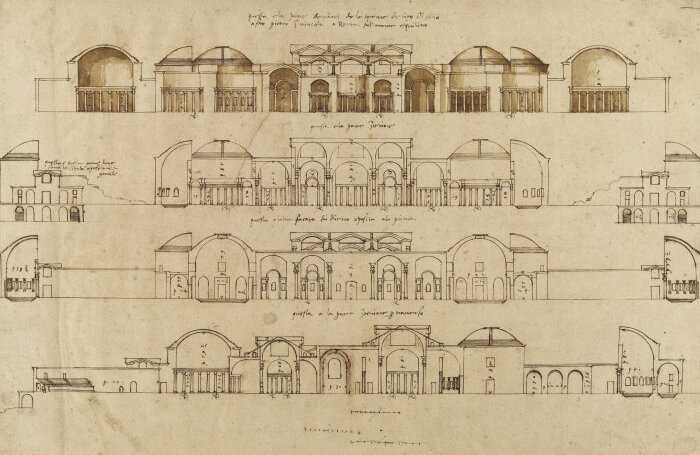
Andrea Palladio, Baths of Trajan, Rome: elevations and sections. 1570s, RIBA Collections
During the Industrial Revolution, architectural printing technology advanced significantly. With the introduction of lithography, architects could now produce large-scale prints with great speed and precision. Lithography made it possible to produce prints on a variety of materials like stone, metal, and even fabric. The printing process involved transferring an image onto a flat surface, and then printing multiple copies of the image. This allowed architects to produce detailed plans on a larger scale, making it easier for builders to execute the designs. As technology continued to improve, digital printing and design software were introduced, making it easier to create detailed and accurate plans. Today, architects and construction professionals continue to rely on architectural drawings to bring their building designs to life, with technology making the process faster, more efficient, and more accurate than ever before.
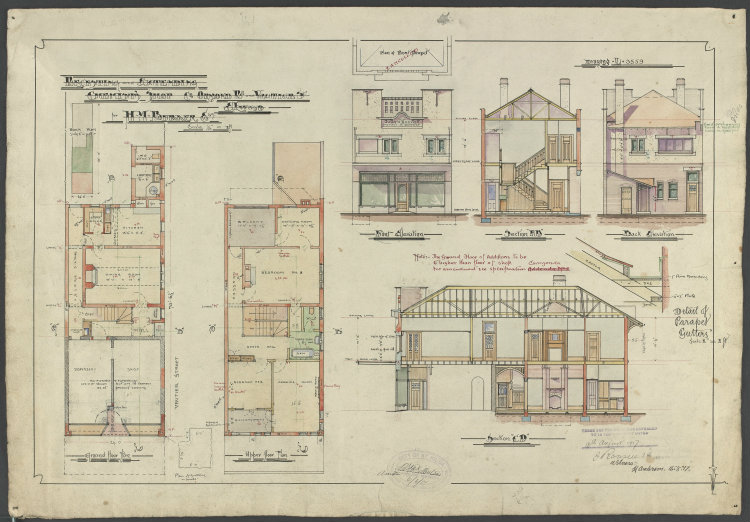
Recasting and extending chemist shop
Modern printing techniques have greatly improved the printing of architectural drawings in several ways. First, digital printing allows architects to create and print designs quickly and accurately, without the need for manually transferring the design to different mediums. This speeds up the design process and allows for more precise plans. Second, with the use of large-format printers, architects can create large-scale prints with incredible detail and clarity, which is essential for complex building designs. Third, the use of colour printing allows architects to create more dynamic and expressive designs, making it easier to convey design concepts to clients and builders. Finally, the use of advanced printing technologies like 3D printing allows architects to create physical models of their designs, which can be used for testing and refinement. Overall, modern printing techniques have revolutionised the way architects and construction professionals work, making it easier to produce accurate, detailed, and visually stunning architectural drawings.
PlanPrinting24 have heaps of experience in printing Architectural Drawings. Get in touch to find out more about how we can help you with your plan printing.
